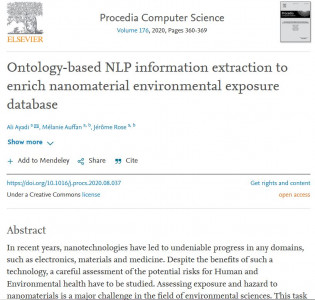Article on " Optimizing the dispersion of nanoparticulate TiO2-based UV filters in a non-polar medium used in sunscreen formulations–The roles of surfactants and particle coatings" by Catalano, R., Masion, A., Ziarelli, F., Slomberg, D., Laisney, J., Unrine, J. M., ... & Labille, J. (2020).
Abstract:
Manufactured TiO2 nanoparticles are widely used in cosmetics as UV blockers. The environmental risk associated with these Engineered Nanomaterials (ENMs) strongly depends on their concentration, aggregation state and surface chemistry. Controlling these parameters in the sunscreen formulation is crucial in order to optimize the ENMs content and better understand their fate, transport, and toxicity at the product’s end-of-life. In the present work, the dispersion in sunscreen oil phase of four nanoparticulate UV filters having different coating characteristics was studied as a function of the oil composition. All the UV filters had a nano-TiO2 core. Three of them were coated with a primary layer of aluminum (hydro) oxide and a secondary external layer of different polymers giving a hydrophobic character. The fourth UV filter was coated with SiO2 only, giving ahydrophilic character. The oil phase was composed of emollient oils and an emulsifying agent containing two surfactant molecules: Octyldodecyl xyloside (ODX) and PEG30 dipolyhydroxystearate (DHS). The ENMs were dispersed in the oil in the presence or absence of the emulsifying agent. Their aggregates size was evaluated, together with the speciation of the surface chemistry before and after the dispersion in oil. We observed that the dispersion in oil of all the UV filters was enhanced by the emulsifying agent, as they were all more aggregated in the emollient oil free of emulsifier. The ODX surfactant plaid a major role in the ENM stabilization compared to the other oil phase components. The extent of interaction between nanoparticles surface and ODX surfactant appeared to be mediated by the chemistry and the stability of both internal and external coatings of the ENM. The highest affinity was evidenced with the Al(OH)3/dimethicone surface.









